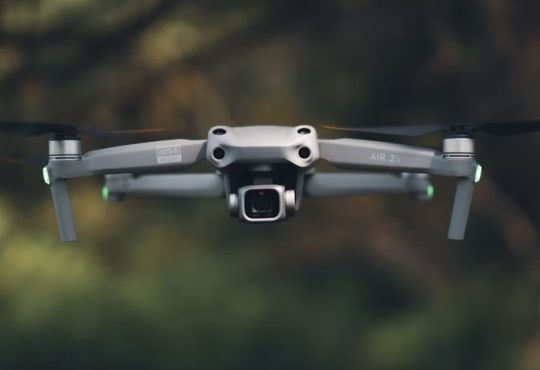In the entertainment domain, a ground-breaking innovation has emerged, beckoning us to embark on journeys into uncharted territories and experience remarkable adventures in previously unimaginable ways. Virtual Reality (VR) has revolutionized our perception and interaction with entertainment, whisking us to digital landscapes where the boundaries between fiction and reality dissolve. In this piece, we delve into the captivating world of Virtual Reality (VR), its profound influence on entertainment, and the thrilling opportunities it presents to creators and audiences alike.
Exploring the Expanding Horizons of Virtual Reality
Despite its initial marketing focus on gaming, virtual reality (VR) has demonstrated immense potential across various sectors and fields, including education, training, simulations, exercise, and healthcare. However, there remains a general need for more understanding regarding the strengths and limitations of VR technology in different application domains. Therefore, this literature review aims to contribute to the existing literature on VR technology, exploring its applications in everyday use and addressing some drawbacks.
The review discusses critical VR applications and how they are currently utilized or could be utilized in the future, spanning fields such as medicine, engineering, education, and entertainment. It highlights the main benefits of VR technology, followed by a discussion of its primary limitations and potential strategies for mitigation or improvement.
Overall, the literature review underscores the significant potential of VR technology as a valuable tool across various applications and fields. While VR is still in its early stages of development, increasing interest and optimism surround its potential to bring about transformative changes in everyday life. Given the rapid adoption of personal computers and smartphones, VR has the opportunity to emerge as the next major technological breakthrough, eventually becoming commonplace in most households.
What is Virtual Reality?
Virtual reality (VR) denotes a computer-generated, three-dimensional environment enabling user interaction, usually accessed through a computer capable of projecting 3D information via displays, such as isolated screens or wearable displays like head-mounted displays (HMDs), coupled with user identification sensors.VR can be categorized into two main types: non-immersive and immersive. Non-immersive VR employs multiple screens surrounding the user to present virtual information. An example is driving or flight simulations where the user sits in a chair surrounded by screens, providing the sensation of being in the cockpit or driver’s seat without total immersion.
Immersive VR, on the other hand, utilizes a wearable display, such as an HMD, to track the user’s movements and present VR information based on their position, allowing them to experience a 360-degree virtual environment. This immersive experience is commonly associated with VR and is one of its most marketable aspects. Between immersive and non-immersive VR lies augmented reality (AR), which overlays computer-generated imagery onto physical elements in the real world, as seen in applications like virtual fitting rooms in stores. Mixed reality (XR) blends AR and VR, creating a spectrum between the physical and digital worlds, allowing users to engage in a virtual environment while maintaining a connection to reality.
Virtual reality (VR) was initially introduced in the 1960s, marked by Morton Heilig’s development of the Telesphere Mask and the Sensorama. These early technologies aimed to immerse users in video displays, giving them a sense of being part of the depicted environment. Ivan Sutherland further developed this concept with his “Ultimate Display” idea, which envisioned users being fully immersed in computer-generated environments through various input and output devices. Despite these innovations, VR remained largely a novelty until the early 2010s.
The next significant advancement in VR technology occurred in the early 2010s, during which VR was still perceived as a niche and expensive technology unlikely to gain mainstream popularity. However, this perception began to change in 2012 with the debut of Palmer Luckey’s prototype for the first Oculus VR headset. The interest generated by this prototype caught Facebook’s attention, leading to its acquisition of Oculus in 2014 and a subsequent surge in the popularity of VR devices for home use. Since then, VR has become increasingly popular and accessible to the general consumer market. Various VR headsets, including the HTC Vive, Samsung VR, Oculus, Google Cardboard, and others, have become available, contributing to the widespread adoption of VR technology.
Despite its initial focus on gaming, virtual reality (VR) has found numerous potential and existing applications across various sectors, including education, training, simulations, exercise, and healthcare. However, there remains a general need for more understanding regarding the strengths and limitations of VR technology in different application domains—some of the significant challenges associated with current VR technology range from technical to financial and health issues.
Technological limitations, such as user discomfort or illness while using VR headsets, the high cost of associated hardware rendering the technology inaccessible to many, and the lack of technical standardization are significant issues that the tech industry aims to address through ongoing research and future improvements.
In summary, this literature review investigates the use of VR applications across diverse domains and offers perspectives on the benefits and limitations of employing VR technology in different contexts.
Reviews of VR Technology Applications
The technological advancements in virtual reality (VR) have broadened its applications beyond gaming and entertainment, making it a valuable tool across various industries. VR enables individuals to engage in tasks that are challenging to practice due to resource limitations or associated risks. Its greatest strength lies in providing a safe yet realistic environment for users to simulate and practice tasks, effectively preparing them for real-world scenarios.
One of the primary applications of VR is simulation, which can be tailored to meet specific user needs. Simulations can be segmented into two primary classifications: immersive and non-immersive. Non-immersive simulations typically involve multiple screens and physical platforms replicating real-world activities or tasks [3]. In contrast, immersive simulations utilize head-mounted displays (HMDs) to fully immerse users in virtual environments, either with or without additional physical platforms. While both simulations are practical, immersive VR simulations offer a slight advantage by providing a more comprehensive and immersive experience. Regardless of the type chosen, VR simulations serve their purpose effectively and help users develop the necessary skills and expertise.
Industrial Simulation Applications
Virtual reality (VR) simulations find extensive applications in the industrial sector, ranging from training simulations to prototyping, designing, and testing tools and objects. These simulations offer a safe and effective means of training users for tasks in hazardous environments without exposing them to real-world risks. Frequently employed virtual reality simulations in the industrial sector encompass:
Driving Simulators: VR-based driving simulators allow users to practice driving in various scenarios, such as adverse weather conditions or emergencies, without the risks associated with real-world driving. These simulations help train drivers to handle challenging situations safely and effectively.
Flight Simulators: VR flight simulators are invaluable for training pilots, providing a realistic simulation of aircraft controls and flight environments. Pilots can practice maneuvers, emergency procedures, and navigation techniques in a controlled virtual environment, enhancing their skills and preparedness for real-world flights.
Combat Simulators: Military personnel benefit from VR combat simulators, which simulate combat scenarios and environments to train soldiers in tactical maneuvers, weapon handling, and decision-making under pressure. These simulations offer a safe and immersive training experience, preparing soldiers for combat without exposing them to danger.
These are just a few examples of the diverse applications of VR simulations in the industrial sector. VR technology is crucial in enhancing safety, efficiency, and effectiveness in various industrial operations, from training simulations for hazardous tasks to prototyping and testing tools and equipment.
Education
Educational applications of virtual reality (VR) hold great promise, although they have yet to be widely implemented. Numerous studies and examples demonstrate the potential benefits of integrating VR into educational environments.
Increased Student Engagement: VR can captivate students’ attention by immersing them in interactive virtual environments. Many students, particularly teenagers, struggle to stay focused in traditional classroom settings, especially when they perceive the topics as irrelevant. However, when exposed to exciting technologies like VR, students become more interested and engaged in learning.
Distraction Reduction: VR headsets effectively block out visual and auditory distractions, creating an immersive learning environment where students can focus solely on the educational material. This enhanced focus can improve retention and comprehension of the subject matter.
Enhanced Teacher-Student Interactions: VR facilitates personalized and interactive learning experiences, allowing teachers to engage with students one-on-one in the virtual environment. This interaction fosters profound understanding and promotes meaningful exchanges between teachers and students.
By harnessing VR technology in education, educators can craft dynamic and immersive learning encounters tailored to students’ learning styles and preferences, ultimately amplifying learning outcomes and academic achievements.
In addition to enhancing engagement and focus, virtual reality (VR) allows students to actively construct and apply their knowledge through immersive, hands-on experiences. Students can improve their grasp of the subject by engaging in meaningful educational activities within the virtual reality (VR) environment, thereby nurturing critical thinking skills.
Moreover, VR enables students to explore and interact with diverse environments that may be difficult or impossible to access in real life, such as underwater ecosystems or outer space. This capability allows for experiential learning and gives students a unique perspective on various concepts and phenomena. By transporting students to different environments, VR facilitates interactive learning experiences that are both safe and efficient, enhancing their overall educational experience.
Mixed reality, an extension of virtual reality (VR), offers innovative applications in natural learning environments, such as laboratory experiments. In diverse reality experiences, students wear a head-mounted display (HMD) that overlays virtual information and instructions onto their physical surroundings, enhancing their understanding and interaction with the learning material.
In the context of laboratory experiments, students can use mixed reality to access supplemental information and instructions relevant to their hands-on tasks. By interacting with physical objects in conjunction with virtual elements displayed through the HMD, students can recreate simulated environments within their real-world surroundings. This virtual and physical elements integration enables students to maintain awareness of their surroundings while benefiting from enhanced visual representations and instructions from the mixed-reality environment.
The utilization of mixed reality in laboratory settings offers several advantages. It helps reduce errors by providing students with clear visual guidance and instructions, promotes student independence as they navigate and engage with the learning material, and fosters sustained interest and engagement in the educational process. Overall, mixed reality technology enhances the effectiveness and immersive nature of learning experiences in real-world environments.
With the onset of the COVID-19 pandemic, there has been a surge in virtual learning, with many classes transitioning to online platforms and adopting asynchronous formats. Virtual reality (VR) presents a novel approach to asynchronous learning, offering a unique environment where students can engage in lectures and interact with virtual instructors programmed with pre-generated responses. Immersion is vital to keeping students engaged in these virtual environments, which can replicate real-life classrooms, allowing students to navigate and collaborate with peers on assignments.
However, one challenge of asynchronous learning in VR is that not all student queries may be addressed, as the information available is limited to what is programmed into the virtual experience. While VR-based education offers a more engaging alternative to traditional online videos, it cannot fully replicate the interactive experience of a physical classroom with direct teacher-student engagement.
As virtual reality (VR) technology advances, there is the potential for its utilization in live, synchronous classes, allowing students to engage with peers and instructors in real time from the comfort of their homes. This approach could have been particularly advantageous during the pandemic-related school closures and could continue to offer flexibility for students experiencing health issues, traveling, or residing in different countries. Although live VR classes have yet to be widely implemented, ongoing advancements in asynchronous learning and social interaction suggest promising opportunities for future development in this area.
The Promising Future of Virtual Reality
This literature review underscores the vast potential of virtual reality (VR) technology across diverse fields such as engineering, education, medicine, and entertainment. As VR continues to gain popularity and acceptance, its applications are expected to expand further, enhancing existing use cases and branching out into new domains. Despite current limitations and challenges, ongoing technological advancements promise to overcome these obstacles and make VR more accessible to a broader audience.
Although VR technology is still in its early stages, growing interest and optimism suggest a bright future for its integration into everyday life. Moreover, ongoing development efforts by experts from various disciplines drive the exploration of specific application scenarios, paving the way for tailored solutions and advancements. Given the rapid adoption of technology in modern society, VR has the potential to emerge as a transformative technological milestone, eventually becoming a commonplace tool in households worldwide.





